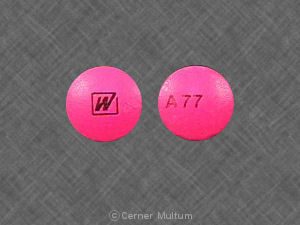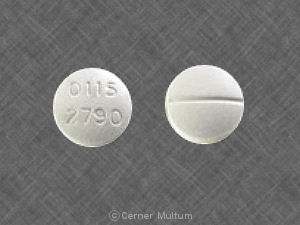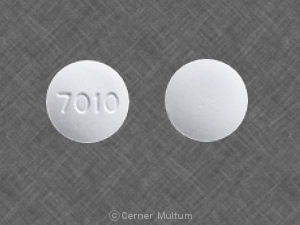What is the most important information I should know about chloroquine?
You should not use this medicine if you have a history of vision changes or damage to your retina caused by chloroquine or similar anti-malaria medications.
Stop taking this medicine and call your doctor at once if you have trouble focusing, if you see light streaks or flashes in your vision, or if you notice any swelling or color changes in your eyes.
An overdose of chloroquine can be fatal, especially in children.
What is chloroquine?
Chloroquine is an anti-malaria medicine that works by interfering with the growth of parasites in the red blood cells of the human body.
Parasites that cause malaria typically enter the body through the bite of a mosquito. Malaria is common in areas such as Africa, South America, and Southern Asia.
Chloroquine is used to treat and to prevent malaria. Chloroquine is also used to treat amebiasis (infection caused by amoebae).
Chloroquine may also be used for purposes not listed in this medication guide.
What should I discuss with my healthcare provider before taking chloroquine?
You should not use this medicine if you are allergic to chloroquine or hydroxychloroquine (Plaquenil), or if you have:
- a history of vision changes or damage to your retina caused by an anti-malaria medication.
To make sure chloroquine is safe for you, tell your doctor if you have ever had:
- heart disease, heart rhythm disorder (such as long QT syndrome);
- an electrolyte imbalance (such as low levels of potassium or magnesium in your blood);
- psoriasis;
- porphyria;
- liver or kidney disease;
- alcoholism;
- epilepsy or other seizure disorder;
- glucose-6-phosphate dehydrogenase (G6PD) deficiency; or
- problems with your vision or hearing.
It is not known whether this medicine will harm an unborn baby. Tell your doctor if you are pregnant.
Malaria is more likely to cause death in a pregnant woman. If you are pregnant, talk with your doctor about the risks of traveling to areas where malaria is common.
Chloroquine can pass into breast milk and may cause side effects in the nursing baby. You should not breast-feed while using this medicine.
How should I take chloroquine?
Follow all directions on your prescription label. Do not take this medicine in larger or smaller amounts or for longer than recommended.
To prevent malaria: Start taking the medicine 2 weeks before entering an area where malaria is common. Chloroquine is usually taken once per week on the same day each week. Continue taking the medicine regularly during your stay and for at least 8 weeks after you leave the area.
If you stop using chloroquine early for any reason, talk to your doctor about other forms of malaria prevention.
To treat malaria: Chloroquine is usually given for 3 days, starting with one high dose followed by a smaller dose during the next 2 days in a row.
To treat amebiasis: Chloroquine is given in a high starting dose for 2 days followed by a smaller dose for 2 to 3 weeks. You may be given other medications to help prevent further infection.
Follow your doctor's dosing instructions very carefully.
Take this medicine for the full prescribed length of time for treatment of malaria. Your symptoms may improve before the infection is completely cleared.
If you use this medicine long-term, you may need frequent medical tests.
Use protective clothing, insect repellents, and mosquito netting around your bed to further prevent mosquito bites that could cause malaria.
Call your doctor as soon as possible if you have been exposed to malaria, or if you have fever or other symptoms of illness during or after a stay in an area where malaria is common.
No medication is 100% effective in treating or preventing all types of malaria. For best results, keep using the medication as directed. Talk with your doctor if you have fever, vomiting, or diarrhea during your treatment.
Store at room temperature away from moisture, heat, and light.
What happens if I miss a dose?
Take the missed dose as soon as you remember. Skip the missed dose if it is almost time for your next scheduled dose. Do not take extra medicine to make up the missed dose.
What happens if I overdose?
Seek emergency medical attention or call the Poison Help line at 1-800-222-1222. An overdose of chloroquine can be fatal, especially in children.
Chloroquine overdose must be treated quickly. You may be told to induce vomiting right away (at home, before transport to an emergency room). Ask the poison control center how to induce vomiting in the case of an overdose.
Overdose symptoms may include headache, drowsiness, nausea, vomiting, vision changes, seizure (convulsions), slow heart rate, weak pulse, fainting, slow breathing (breathing may stop).
What should I avoid while taking chloroquine?
Avoid taking an antacid or Kaopectate (kaolin-pectin) within 4 hours before or after you take chloroquine. Some antacids can make it harder for your body to absorb chloroquine.
If you also take an antibiotic called ampicillin, avoid taking it within 2 hours before or 2 hours after you take chloroquine. Chloroquine can make ampicillin much less effective when taken at the same time.
This medication may cause blurred vision and may impair your thinking or reactions. Be careful if you drive or do anything that requires you to be alert and able to see clearly.
What are the possible side effects of chloroquine?
Get emergency medical help if you have signs of an allergic reaction (hives, difficult breathing, swelling in your face or throat) or a severe skin reaction (fever, sore throat, burning in your eyes, skin pain, red or purple skin rash that spreads and causes blistering and peeling).
Taking chloroquine long-term or at high doses may cause irreversible damage to the retina of your eye. Stop taking this medicine and call your doctor at once if you have trouble focusing, if you see light streaks or flashes in your vision, or if you notice any swelling or color changes in your eyes.
Call your doctor at once if you have:
- vision problems, trouble reading or seeing objects, hazy vision;
- fast or pounding heartbeats, fluttering in your chest, shortness of breath, and sudden dizziness (like you might pass out);
- severe muscle weakness, loss of coordination, underactive reflexes;
- hearing loss or ringing in the ears;
- a seizure (convulsions); or
- upper stomach pain, loss of appetite, jaundice (yellowing of the skin or eyes).
Common side effects may include:
- diarrhea, vomiting, stomach cramps;
- headache;
- changes in hair or skin color;
- temporary hair loss; or
- mild muscle weakness.
This is not a complete list of side effects and others may occur. Call your doctor for medical advice about side effects. You may report side effects to FDA at 1-800-FDA-1088.
What other drugs will affect chloroquine?
Tell your doctor about all your current medicines and any you start or stop using, especially:
- cimetidine;
- cyclosporine;
- mefloquine;
- praziquantel;
- tamoxifen;
- heart rhythm medication; or
- insulin or oral diabetes medicine.
This list is not complete. Other drugs may interact with chloroquine, including prescription and over-the-counter medicines, vitamins, and herbal products. Not all possible interactions are listed in this medication guide.
Where can I get more information?
Your pharmacist can provide more information about chloroquine.
Remember, keep this and all other medicines out of the reach of children, never share your medicines with others, and use this medication only for the indication prescribed.
Every effort has been made to ensure that the information provided by Cerner Multum, Inc. ('Multum') is accurate, up-to-date, and complete, but no guarantee is made to that effect. Drug information contained herein may be time sensitive. Multum information has been compiled for use by healthcare practitioners and consumers in the United States and therefore Multum does not warrant that uses outside of the United States are appropriate, unless specifically indicated otherwise. Multum's drug information does not endorse drugs, diagnose patients or recommend therapy. Multum's drug information is an informational resource designed to assist licensed healthcare practitioners in caring for their patients and/or to serve consumers viewing this service as a supplement to, and not a substitute for, the expertise, skill, knowledge and judgment of healthcare practitioners. The absence of a warning for a given drug or drug combination in no way should be construed to indicate that the drug or drug combination is safe, effective or appropriate for any given patient. Multum does not assume any responsibility for any aspect of healthcare administered with the aid of information Multum provides. The information contained herein is not intended to cover all possible uses, directions, precautions, warnings, drug interactions, allergic reactions, or adverse effects. If you have questions about the drugs you are taking, check with your doctor, nurse or pharmacist.
Copyright 1996-2018 Cerner Multum, Inc. Version: 5.01. Revision date: 12/5/2017.


